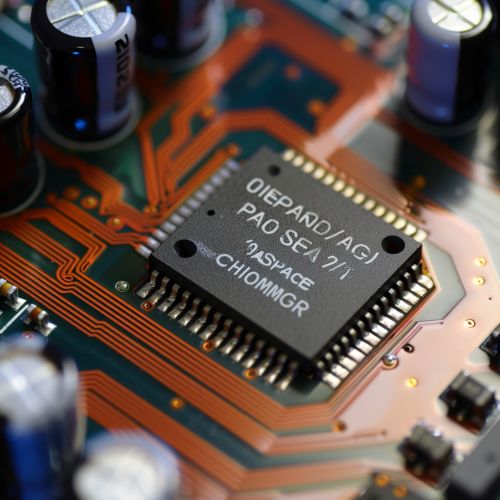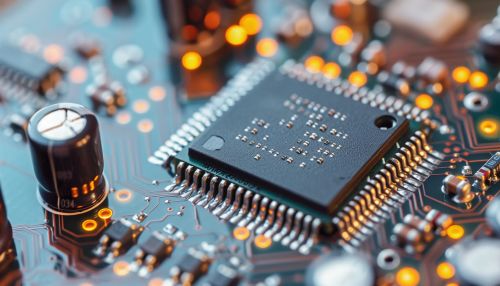Operational Amplifier
Introduction
An operational amplifier, often abbreviated as op-amp, is a high-gain electronic voltage amplifier with a differential input and, usually, a single-ended output. This device is one of the most versatile electronic devices available due to its characteristics such as high gain, high input impedance, low output impedance, and others.
History
The operational amplifier was first developed in the early 1940s by the Bell Telephone Laboratories. The initial purpose of the operational amplifier was for mathematical operations in analog computers, hence the name "operational amplifier". The first operational amplifiers were vacuum tube-based, but with the advent of solid-state technology, the operational amplifier was miniaturized and made more reliable.


Basic Operation
The operational amplifier operates on the principle of differential amplification, where the difference between the input voltages is amplified. In an ideal operational amplifier, the gain is infinite, but in practical op-amps, it is very high, typically in the order of 10^5 to 10^7.
Characteristics
Open Loop Gain
The open-loop gain of an operational amplifier is the gain without any external feedback from the output to the input. This gain is very high in an operational amplifier, typically on the order of 10^5 to 10^7 at DC.
Input Impedance
The input impedance of an operational amplifier is the ratio of input voltage to input current. It is typically very high, in the order of megaohms, which means that the operational amplifier draws very little input current.
Output Impedance
The output impedance of an operational amplifier is typically very low. This means that the operational amplifier can drive a wide range of loads, including low-impedance loads.
Applications
Operational amplifiers have a wide range of applications in electronics and signal processing. These include, but are not limited to, amplification, active filtering, signal conditioning, and others.
Amplification
One of the most common uses of operational amplifiers is in voltage amplification circuits. In these circuits, the operational amplifier is used to amplify a small input voltage to a larger output voltage.
Active Filtering
Operational amplifiers can be used in active filter circuits. These circuits can be designed to pass, reject, or amplify signals of certain frequencies.
Signal Conditioning
Operational amplifiers are often used in signal conditioning circuits. These circuits are used to modify a signal in a way that makes it suitable for further processing.
